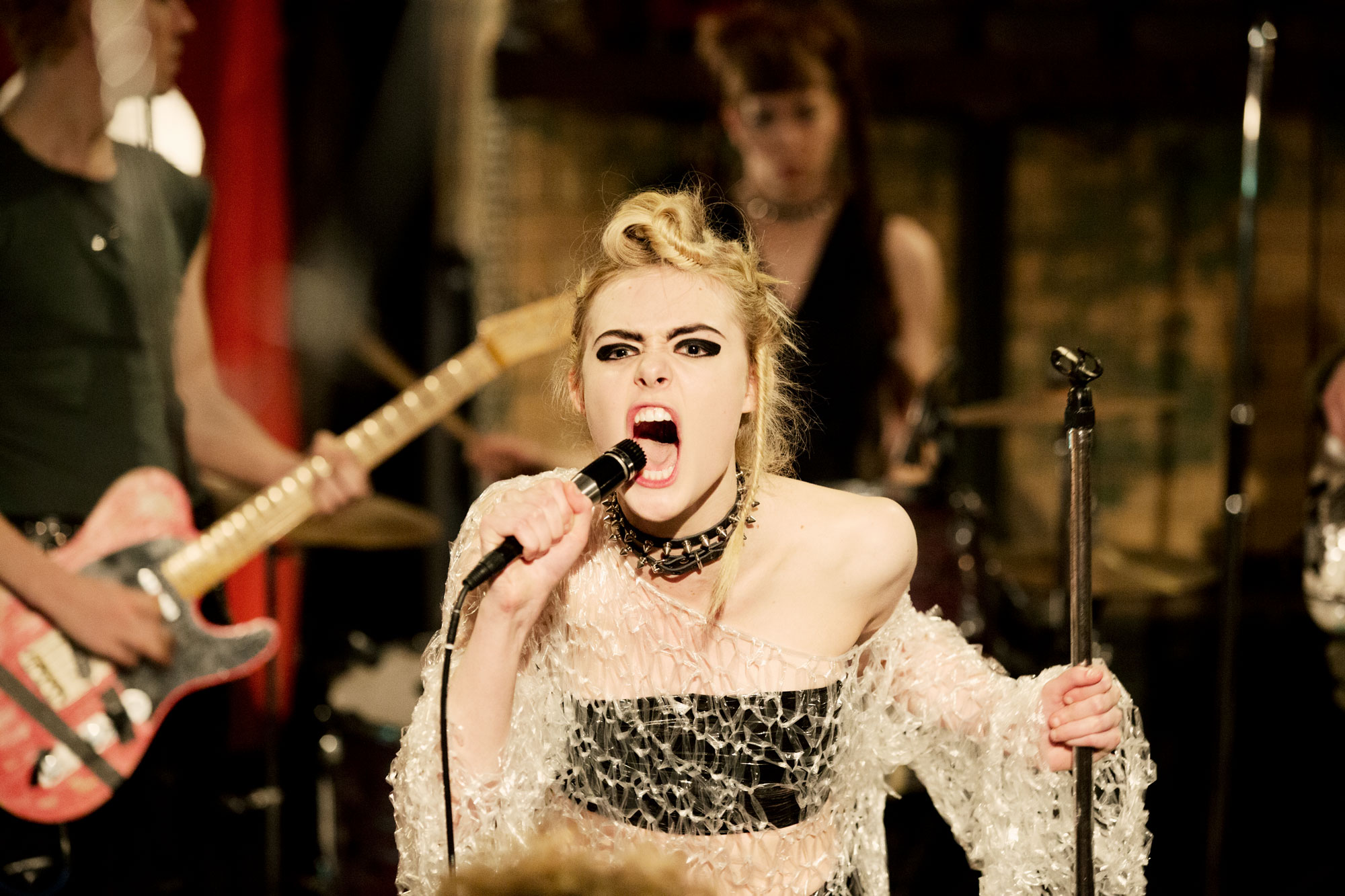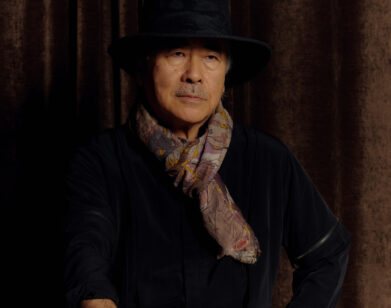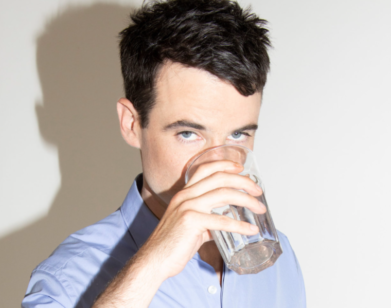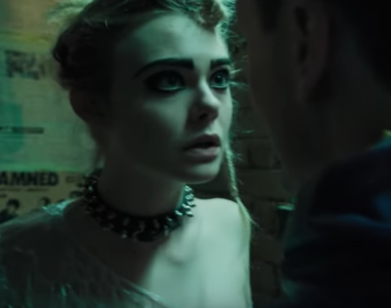How John Cameron Mitchell and Neil Gaiman infused their sci-fi movie with a punk spirit

IMAGE COURTESY OF A24
Trying to decipher what John Cameron Mitchell will do next has always been a sucker’s bet. His career has long vacillated between stage and screen, from a stint belting out rock ballads during the 2015 Broadway run of Hedwig and the Angry Inch, to his work directing notable art-house features like 2006’s Shortbus and 2010’s Rabbit Hole.
Mitchell’s latest film, How to Talk to Girls at Parties, takes its inspiration from a short story of the same name by acclaimed sci-fi/fantasy writer Neil Gaiman. While Gaiman has seen a number of his projects adapted over the years—most recently with the Starz series American Gods—there is something deeply personal about his collaboration with Mitchell. For one, the film’s main character has much in common with Gaiman’s teenage self: both grew up in 1970s England and found themselves in the messy but defiant ethos of punk.
Mitchell is thus a perfect auteur for telling Gaiman’s story, which finds the teenager Enn (Alex Sharp) entranced by Zan (Elle Fanning )—a girl he meets a party who happens to be part of a visiting group of extraterrestrials. While Enn and his compatriots worry about sneaking into pub concerts and distributing their zine, Zan is entranced by a world that’s markedly different from her own. The “fish out of planet” plot may be well-tread territory, but for Mitchell and Gaiman, the narrative is but one part of their larger fascination with how we each define punk.
ZACK RUSKIN: Music is a huge part of both this film and the story that it’s based on. In the original text, there’s an allusion to David Bowie and a few band names that get checked, but you actually only use the word “punk” once. Did the musicality of this story help bring you two together initially?
NEIL GAIMAN: I remember you and I were talking about the music from the beginning. Where we wound up wasn’t necessarily where we started, but I suspect, had we had a budget that was twice what we had, we probably would’ve had a lot more Bowie and the Stranglers and so on.
RUSKIN: You actually created a punk band for the film: The Discords.
GAIMAN: We created a minor punk band—they aren’t one of the ones that made it big. This is a band that you probably hear now on one of those Rhino compilation albums.
JOHN CAMERON MITCHELL: They were meant to be like Eater, who were the real teenagers from South London that knew what was going on. They hung out with the fashion contingent but weren’t really a part of it. They were the kid brothers. The drummer was like 14. We all learn something when we have to deal with a certain budget. With Hedwig, I had a scene where I wanted a helicopter shot of her on a garbage scow at the end of “Wig in a Box.” We ended up taking a wall down in a trailer and it became a stage. You make do—that’s part of the punk ethos and the Hedwig ethos. With Shortbus, I wanted a scale model of the whole city of New York. We ended up making a digital, painted version, which actually looked better. In this case, we didn’t ever try to get “God Save the Queen,” because for the most anti-establishment song ever made, it’s owned by so many goddamn corporations. It’s unbelievably expensive. Same with The Slits.
GAIMAN: Really?
MITCHELL: It’s because there were four writers and the estates of those writers would not get back to us. It was crazy. So we had a couple of great songs that we targeted from the past: The Damned, the Homosexuals—the singer of which was in the film—and I did go after a Lou Reed song because I knew Laurie Anderson. She helped make it happen. The rest are originals. We have alien music and we have punk circa ’77. One of the jokes was that without the aliens, punk wouldn’t have become post-punk.
RUSKIN: The aliens in this film aren’t rendered in CGI. Instead, they’re distinguished by brightly colored latex and rubber costumes and some inventive hair and makeup. How did you land on that aesthetic?
GAIMAN: I’ll leave it to [John] to talk about Sandy Powell’s amazing costume contribution, but one of the things that I love are the jokes in How to Talk to Girls at Parties. Nobody points them out to you. I love the fact that PT First looks a lot like the Queen. You start to realize that they’ve built themselves human bodies for this tourist trip, and they’ve obviously seen what our leaders look like and decided that is what a leader should look like. However, nobody makes the joke. Nobody points to it or alludes to it. It’s just this wonderful, weird subtle gag.
MITCHELL: There are a lot of queens in this film. Nicole Kidman plays Queen Boadicea, who, to any school kid in Britain, is a George Washington or David Crockett figure. Nicole describes her as the first punk. The first punk was a she. She drove out the invaders.
GAIMAN: And she failed, which I love!
MITCHELL: That’s part of punk too.
GAIMAN: It is part of punk. It’s also part of the Englishness of it. Of course you have to fail. There’s a great statue of Boadicea with knife blades on her chariot wheels, so wherever she went she was cutting up the legs of these poor, lone soldiers who were just doing their job. I think that was one of the challenges that I gave to John and his team in the short story. There are aliens, and we have to be able to know pretty quickly that they are aliens, but Enn and his friends can’t know right away. The gag of the short story is that Enn never realizes. He’s recounting these conversations he has with these girls at the party and he never realizes. The boys jump to all of the wrong conclusions, but the reader gets a much better view of what’s going on.
MITCHELL: When Sandy [Powell, costume designer] came in, I was torn between making them quite believably dressed and this and that. When I spoke to Sandy, I realized that maybe they should look like aliens were supposed to look like in the 1960s, and play on this element of nostalgia. It all kind of came from this Gary Numan video I saw. He is, in a way, the child of our aliens. I loved him, and he came out of punk and made something else. I remember reading a user comment on YouTube that said, “The future in 1979 was much cooler than it turned out to be.”
GAIMAN: The future hasn’t aged well. I remember looking at the title of a J.G. Ballard collection—I think it was his last short story collection—called Memories of the Space Age. At the time, I thought it was kind of weird, but now the Space Age is something you have to remember. Everything seemed so much simpler then. For Enn, everything is peculiarly simple. He’s living in this world where the future is going to be exciting and better.
MITCHELL: And Enn’s seeing it all through this punk lens, which is about wanting to tear things down, but he also has his own little scientific theory of punk as a virus that is healthy.
RUSKIN: Enn and his friends also have a punk zine that they desperate to get into the hands of the right people—or perhaps just anyone who won’t immediately throw it away. Did either of you ever have a zine?
GAIMAN: Philippa Goslett wrote the screenplay with John. She did an outline. I remember reading it and thinking that I had to talk to her. The next time I was in the U.K., she and I got together for a few hours, and all I did was just talk for an hour and a half about stuff I remember, and what it was like to be sixteen in 1977. I told her about seeing the Jam at the Greyhound in Croydon, which was a pub. We were too young at that point—I hadn’t quite turned sixteen, which is the age you have to be to get into a pub and watch a gig. So instead we crept in because some doors were open during soundcheck and we stood at the back where it was too dark to see us. We wanted to meet people, so we made a magazine. We called it Metro, because at the time there weren’t any magazines around called Metro. You could call people up and say, “We’re from Metro,” and it sounded like a real thing.
MITCHELL: Did you get interviews because of that?
GAIMAN: Yeah! I interviewed Michael Moorcock. I interviewed Roger Dean, who did all of the cover art for Yes. My friend Steve Gett was also part of it. The magazine was my idea, but he was the one who was smart enough to go down to Webster Bookshop and sell them an advert to fund the printing. I think it was in our second issue two that he interviewed the band UFO. He parlayed that into interviewing more heavy metal bands and then went on to become one of the founders of Kerrang!.
MITCHELL: Were any of the Metro guys in your band?
GAIMAN: Geoff Notkin was the drummer. In a lot of ways Enn is bits of me and bits of Geoff. Geoff actually lived the life that I wanted as a teenager. He actually got to the School of Visual Arts in New York and studied comics under Harvey Kurtzman and Will Eisner, which is all I wanted to do, except that then he went off and became a designer for American Express.
MITCHELL: With his punk band, someone tried to sign them but they didn’t sign.
RUSKIN: Is that because signing a record deal wouldn’t be punk?
GAIMAN: No. It was because my dad knew an entertainment lawyer. We were given a contract and I took it to this guy and asked if he would look at it. He told me that the way the record label, Heat, had set things up, they would be our management company, our record label, and our music publisher. If we’d had a number one single in the U.K., we’d have been lucky to clear £100 each. For me, that was a weird little revelation. It wasn’t that I was in it for the money—the money hadn’t even occurred to me. It was realizing that, like in the movie, this is something that eats its children. They were ready to exploit us, and that was really it for me. All of my interest in being part of the music world kind of went away at that point.
RUSKIN: I’d be remiss not to single out Elle Fanning’s performance in this film. She is truly captivating as this alien who in many ways feels more human than many of the actual human characters in the story.
GAIMAN: It’s a transcendent performance. You actually buy her as an alien, as somebody seeing the world for the first time.
MITCHELL: It was really Philippa who created Zan. It was an amalgam of the three girls in the short story. The story is actually quite female-centric, even though Enn is our way in. Zan’s character, Nicole Kidman’s character, Ruth Wilson’s character—they are the queens. The men are kind of the drones or the viruses, who just offer their DNA. The whole film is really about motherhood, to be honest.
RUSKIN: How did you actually find Elle?
MITCHELL: We thought about a lot of the so-called “star” actors that were the right age. I saw Ginger & Rosa, where Elle Fanning plays a very believable British person. She was just luminescent as a performer. Meeting her, she was full of joy—she was only 16 at the time. There are a lot of actors who play teenagers, but you just don’t really buy it. Elle was truly a thrilled-by-life girl. She responded so strongly. Once we knew Elle was Zan, it affected the writing. She became less mysterious. She became more open.
RUSKIN: A lot of How to Talk to Girls at Parties is about trying to solve the enigma of what punk really means.
MITCHELL: In the last ten years, punk has been pretty moribund. Young people, since 9/11 in some ways, haven’t necessarily been the agents of change. They’ve become more and more conservative. I think digital culture has something to do with it, and certainly the economy has something to do with it. Strangely, we’re also seeing a blossoming of the kind of punk that I relate to in the Parkland kids, and specifically in Emma González. She is just a transcendent figure to me: empathy mixed with rebellion. That’s the epitome of punk and youth. Lately the old people have been making change. They wanted to smash things up, and they have, out of fear, as opposed to young people smashing things up out of hope! Our film isn’t necessarily a punk statement, but it is a statement for love and a statement for not standing for the way things are and changing what your parents fucked up.
GAIMAN: We’re really proud of it. It’s one of those weird things where I love both how much people have loved the film, and I love that the BBC’s lead film reviewer said it was the worst film he had ever seen in a lifetime of reviewing films. I think we should put it up on the posters.
HOW TO TALK TO GIRLS AT PARTIES FROM A24 IS OUT WIDE IN THEATERS ON JUNE 1, 2018.



